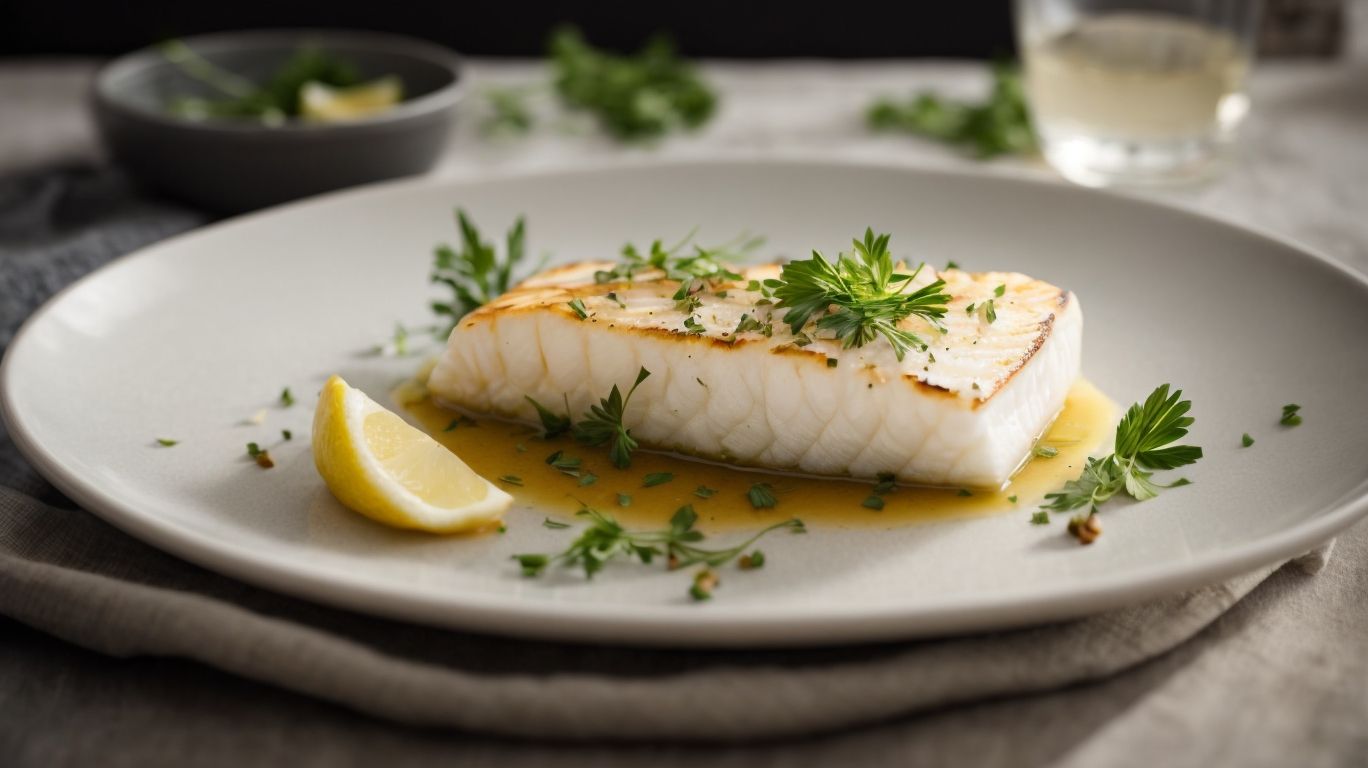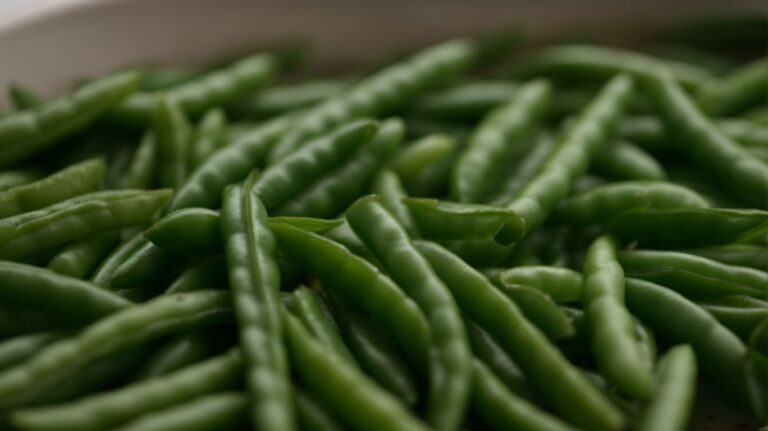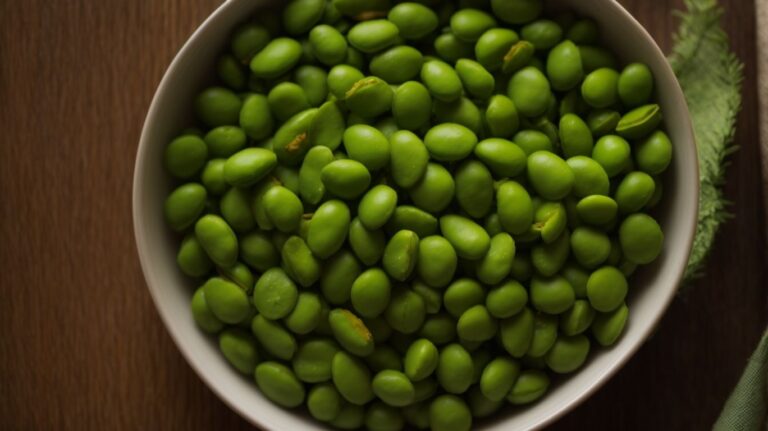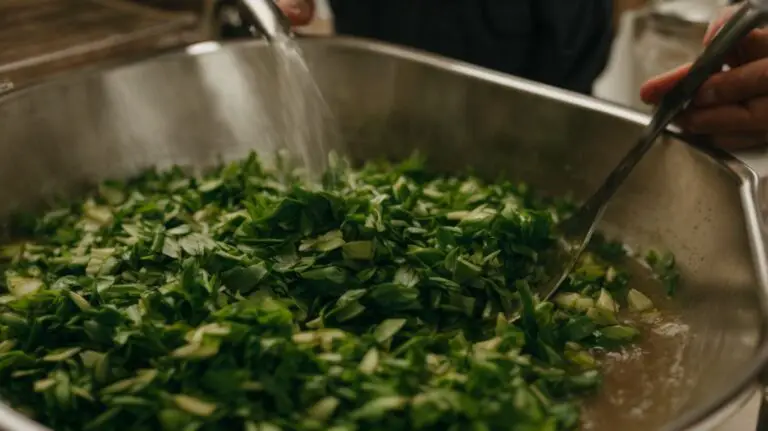How to Cook Halibut Without Drying It Out?
Are you a seafood lover looking to master the art of cooking halibut? Look no further! This comprehensive guide covers everything you need to know about this popular fish. From choosing the best halibut to seasoning it perfectly, we’ve got you covered. Discover the best cooking methods to prevent your halibut from drying out, along with tips for knowing when it’s cooked to perfection. Get ready to impress your friends and family with delicious halibut dishes that will have everyone coming back for seconds!
Key Takeaways:
What is Halibut?
Halibut is a versatile fish known for its tender and moist texture, making it a popular choice for cooking enthusiasts.
Its mild flavor pairs well with a variety of seasonings such as lemon, dill, and garlic, allowing for endless culinary possibilities. Whether grilled, baked, or pan-seared, halibut retains its delicate taste and flakes beautifully when cooked properly. Due to its low oil content, it is essential to cook halibut with care to prevent it from drying out. This fish is also rich in nutrients like protein and omega-3 fatty acids, making it a healthy option for those mindful of their diet.
Why is Halibut a Popular Fish?
Halibut has gained popularity among home cooks and chefs due to its versatility in various cooking methods and its ability to pair well with flavorful ingredients like lemon butter sauce.
Its mild, sweet flavor makes it a favorite choice for those looking for a fish that is not overwhelmingly fishy. Halibut’s firm texture holds up well whether it’s grilled, pan-seared, baked, or even incorporated into sushi or ceviche recipes.
The meatiness of halibut allows it to stand out in hearty dishes like fish stews or fish tacos, adding a substantial element to the meal. The delicate nature of halibut also makes it ideal for more refined preparations like poaching or en Papillote.
How to Choose the Best Halibut for Cooking?
Selecting the best halibut for your cooking endeavors involves considering factors like freshness, texture, and suitability for your chosen recipe.
When choosing halibut, opting for fish that has firm flesh with a pearlescent sheen indicates freshness. Avoid fish with any hint of fishy odor as it may indicate the fish is not as fresh. The texture of halibut should be dense, yet delicate, ensuring a melt-in-your-mouth experience when cooked. Ensuring that the halibut is sourced sustainably can also impact its quality and flavor, contributing to a more ethical choice for your dish. Remember, the quality of the halibut you choose can truly elevate the final flavors of your culinary creation.
What to Look for When Buying Halibut?
When purchasing halibut, it is essential to look for specific indicators of freshness, such as clear eyes, firm flesh, and a mild sea scent.
One of the key visual cues to check for is the appearance of the eyes; they should be bright and clear rather than cloudy or sunken. Firm flesh is another crucial aspect. The fillets should bounce back when gently pressed, indicating freshness. A mild sea scent is also a positive sign, suggesting that the fish hasn’t been stored for too long. A good-quality halibut should have a shiny, moist skin and a clean, ocean-like aroma.
How to Tell if Halibut is Fresh?
Freshness is key when it comes to halibut, and you can determine this by examining the appearance, smell, and texture of the fish.
When purchasing halibut, look for firm, translucent flesh that bounces back when pressed lightly. The skin should be shiny, and the color vibrant, ranging from off-white to cream with a slight iridescent quality. A fresh halibut should not have any discoloration, dark spots, or unpleasant odors. The aroma of a good halibut is mild and a bit sea-salty. The fish should feel slightly springy to the touch, indicating its firmness and freshness.
Tips for Preparing Halibut for Cooking
Properly preparing halibut for cooking involves steps like thawing, skin removal, and seasoning to enhance its natural flavors.
Thawing halibut properly is crucial to maintain its texture and flavor. The best way to thaw frozen halibut is to place it in the refrigerator overnight or for at least 24 hours. If you’re short on time, you can also thaw it in a sealed bag under cold running water. In terms of removing the skin, some prefer to leave it on for a more robust flavor, while others opt to have the skin removed for a milder taste.
How to Properly Thaw Frozen Halibut?
To thaw frozen halibut safely, it is advisable to transfer the fish to the refrigerator and allow it to defrost gradually to preserve its texture and flavor.
This slow thawing process helps maintain the integrity of the fish’s delicate flesh, preventing any loss of moisture that may occur with rapid thawing methods such as using a microwave or hot water. By thawing in the refrigerator, you are controlling the temperature and ensuring that the halibut thaws evenly.
Patience is key when thawing halibut to avoid any mushiness or dryness that can result from sudden temperature changes. Plan ahead and give the fish enough time to thaw properly, usually overnight or around 24 hours.
Remember to place the halibut on a plate or tray to catch any drips and prevent cross-contamination with other foods in the fridge. Once thawed, cook the halibut promptly to fully enjoy its fresh taste and delicate texture.
Should You Remove the Skin of Halibut?
The decision to remove the skin of halibut depends on personal preference and the cooking method chosen, as the skin can add flavor and protect the fish during cooking.
In terms of flavor, leaving the skin on while cooking can introduce a richer taste to the halibut, as the skin contains oils that enhance the overall culinary experience. The skin also acts as a protective barrier during the cooking process, helping to retain moisture and prevent the fish from drying out.
Removing the skin before cooking can result in a lighter texture and a more delicate mouthfeel, ideal for dishes where a lighter touch is desired. This can be particularly beneficial when grilling or searing the halibut, allowing for a crispy exterior without the chewiness that the skin might introduce.
How to Season Halibut for Cooking?
Seasoning halibut thoughtfully with herbs, spices, and marinades can elevate its taste profile and complement the natural flavors of the fish.
Herbs like dill, parsley, and chives work wonders with halibut, adding freshness and earthy notes. For a kick of warmth, consider using spices such as paprika, cayenne pepper, or even a touch of cumin. When marinating halibut, a mix of lemon juice, olive oil, garlic, and a hint of ginger can infuse the fish with a delightful tanginess and depth of flavor. Balancing these elements is key to creating a harmonious taste experience without overpowering the delicate nature of the halibut.
Methods for Cooking Halibut Without Drying It Out
Cooking halibut to perfection involves employing techniques like grilling, baking, pan-searing, poaching, and steaming to maintain its moisture and achieve a flaky texture.
Grilling halibut over direct heat imparts a smoky flavor while locking in its natural juices. Baking halibut in the oven with a drizzle of olive oil and herbs ensures even cooking and tenderness. Pan-searing halibut in a hot skillet with a touch of butter creates a crispy crust while keeping the fish moist inside.
Poaching halibut in a flavorful broth at a low temperature helps retain its delicate taste and texture. Steaming halibut gently in a closed environment preserves its moisture and subtlety, making it an ideal method for those who prefer a light touch.
Grilling Halibut
Grilling halibut imparts a smoky flavor and beautiful grill marks, enhancing its taste profile when combined with basting techniques for added moisture.
When grilling halibut, it’s essential to preheat the grill to medium-high heat to ensure perfect sear marks on the fish. To achieve those picturesque grill marks, cross-hatch or diagonal placement of the fillets on the grill is recommended. This method allows for even cooking and caramelization, enhancing the overall flavor and presentation. For basting, a simple blend of olive oil, lemon juice, garlic, and herbs works wonders in keeping the halibut moist and flavorful throughout the grilling process.
Baking Halibut
Baking halibut in the oven is a gentle cooking method that helps retain moisture and tenderness, resulting in a perfectly cooked and flavorful dish.
When preparing halibut for baking, it is crucial to ensure that the fish is properly seasoned to enhance its natural flavors. Fresh herbs such as dill, parsley, or thyme can complement the delicate taste of halibut. Preheat the oven to around 400°F (200°C) to create an optimal cooking environment. Place the seasoned fish fillets on a baking tray lined with parchment paper to prevent sticking.
Covering the halibut loosely with foil during the initial cooking phase can help retain moisture. Bake for approximately 12-15 minutes depending on the thickness of the fillets. Avoid overcooking to prevent the fish from becoming dry. To check for doneness, the halibut should easily flake with a fork.
Pan-searing Halibut
Pan-searing halibut in a hot skillet creates a crispy, golden-brown exterior while locking in moisture and flavor within the fillet for a delightful dining experience.
When preparing to pan-sear halibut, it is essential to ensure that the fish is patted dry with paper towels prior to cooking. This step helps to achieve a more even sear and prevents steaming. Halibut fillets should also be seasoned generously with salt and pepper just before they hit the hot skillet to enhance the natural flavors of the fish. Heating a mixture of oil and butter in the skillet before adding the fillets helps to create that perfect browned crust.
Poaching Halibut
Poaching halibut gently in flavorful liquid helps maintain its moisture and delicate texture, resulting in a tender and succulent fish dish.
When poaching halibut, the choice of liquid is crucial. Common poaching liquids include broth, white wine, lemon-infused water, or even coconut milk for a unique twist. These liquids infuse the fish with subtle flavors while keeping it moist. Maintaining the poaching liquid at a gentle simmer, around 160-180°F (71-82°C), is ideal to prevent the fish from overcooking. The cooking time varies depending on the thickness of the halibut fillet, but typically ranges from 8-10 minutes per inch of thickness. This slow and gentle cooking method ensures that the halibut remains juicy and flaky.
Steaming Halibut
Steaming halibut is a healthy and gentle cooking method that preserves its natural moisture and texture, ensuring a light and flavorful final dish.
When you steam halibut, the fish is enveloped in the gentle, moist heat generated by the steam. This method helps the fish cook evenly without drying out, unlike some other cooking methods that may cause fish to lose moisture and become tough. By steaming, you are essentially locking in all the flavors, nutrients, and moisture of the delicate halibut, resulting in a tender and succulent dish. This technique is particularly beneficial for those looking for a light and nutritious meal option, without compromising on taste.
Tips for Cooking Halibut in Different Ways
Experimenting with various cooking methods for halibut can yield diverse and delicious results, offering opportunities to explore different textures and flavors.
When preparing halibut, one popular method is to sear it in a hot pan to achieve a crispy exterior while keeping the inside moist and tender. Adding a splash of lemon juice during the cooking process can enhance the natural flavors of the fish without overpowering it. Another option is to bake the halibut with a flavorful herb crust, such as a mixture of panko breadcrumbs, garlic, and fresh parsley, to add an extra layer of texture and taste.
How to Know When Halibut is Cooked Perfectly?
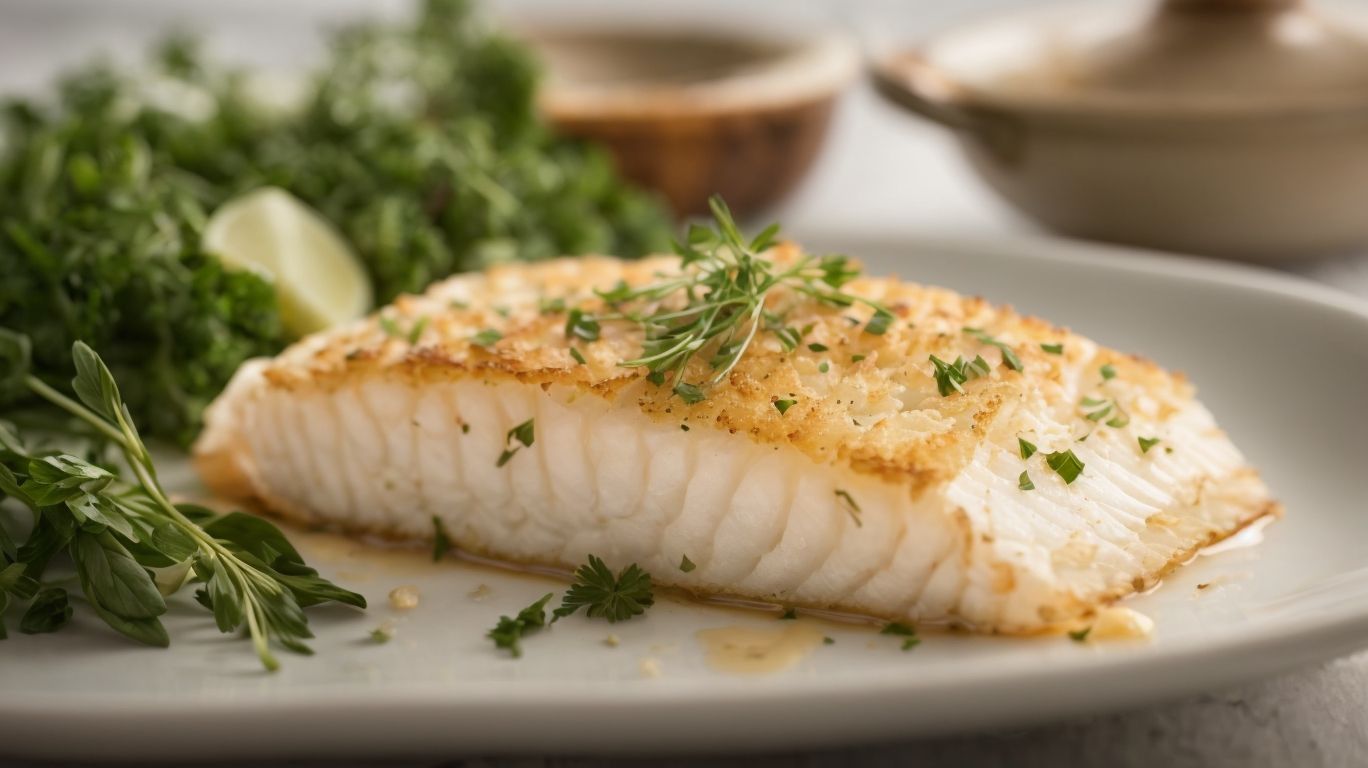
Credits: Poormet.Com – Gregory Allen
Determining the ideal cooking point for halibut involves monitoring key indicators like internal temperature, flakiness, and cooking time to ensure a perfectly cooked fish.
When checking the internal temperature of your halibut, aim for a reading of 145°F (63°C) for optimal doneness. A crucial sign of a perfectly cooked halibut lies in its flake consistency – the fish should easily flake apart with a fork while still retaining moisture. The cooking duration plays a vital role in achieving the desired result; overcooking can lead to dry and tough fish, so it is essential to cook the halibut just until it turns opaque and easily flakes.
Serving Suggestions for Halibut
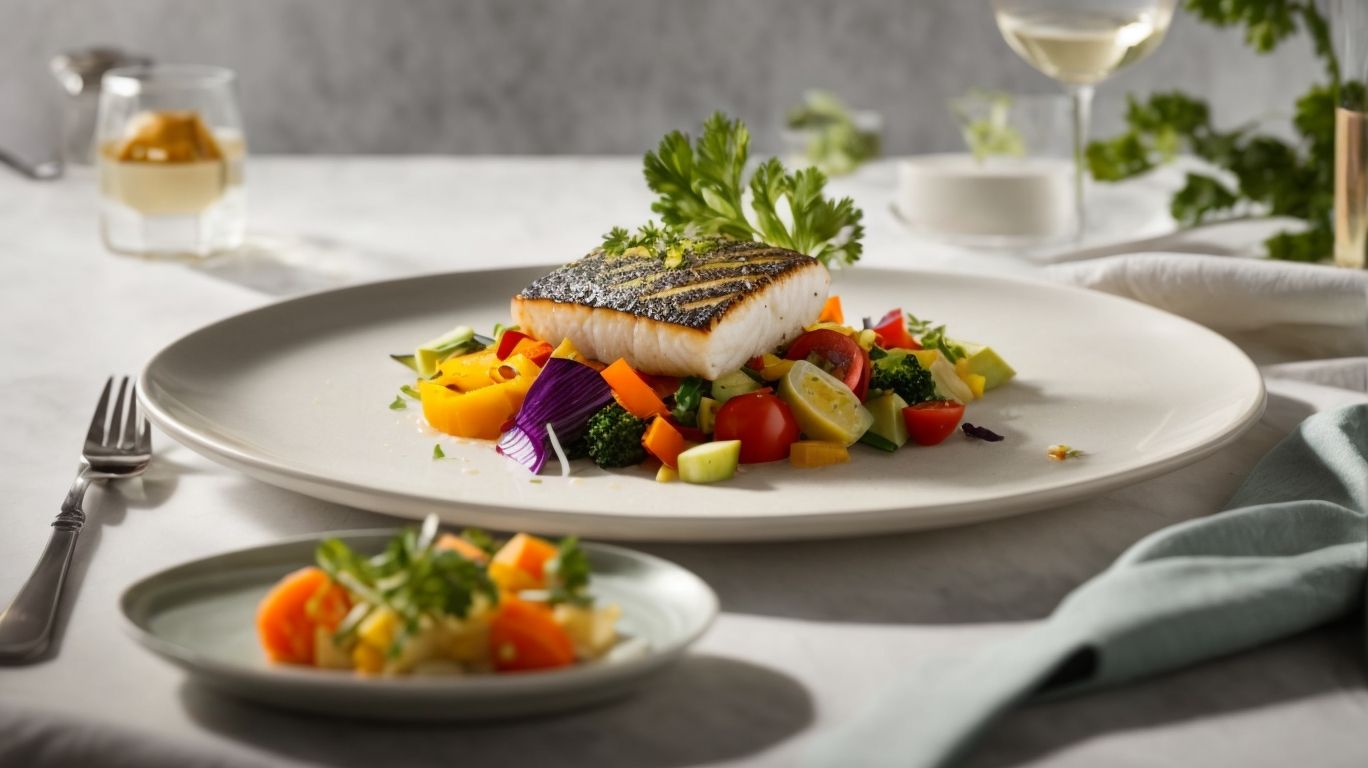
Credits: Poormet.Com – Roger Hall
Presenting halibut in enticing ways involves pairing it with complementary side dishes like vegetables, starches, salads, and other accompaniments to create a well-rounded meal.
For a delightful and balanced dining experience, consider serving the perfectly cooked halibut with a side of roasted asparagus drizzled with balsamic glaze to add a touch of sweetness. A creamy lemon risotto can enhance the flavors of the dish, providing a rich and comforting element to the meal.
- Another excellent option would be a fresh cucumber and tomato salad dressed in a light vinaigrette, offering a refreshing contrast to the rich and flaky texture of the fish.
- To elevate the meal further, a side of garlic mashed potatoes could provide a comforting and hearty accompaniment that complements the halibut’s subtle flavors.
What Side Dishes Go Well with Halibut?
Halibut pairs beautifully with a variety of side dishes such as roasted vegetables, herbed starches, fresh salads, and light soups to create a harmonious dining experience.
Roasted vegetables, like colorful bell peppers and tender asparagus, add a charred sweetness that complements the delicate flavor of the halibut.
For herbed starches, consider serving garlic mashed potatoes or a lemon-infused quinoa for a burst of flavor.
Fresh salads with crisp greens, juicy cherry tomatoes, and a tangy vinaigrette bring a refreshing contrast to the richness of the fish.
A light soup, such as a coconut-infused broth with lemongrass and ginger, can serve as a warm, comforting accompaniment to the halibut.
How to Plate and Garnish Halibut for a Beautiful Presentation?
Elevate the visual appeal of halibut dishes by artfully plating the fish, garnishing with fresh herbs or citrus, and drizzling with a flavorful sauce to create an eye-catching presentation.
When plating halibut, consider using a mix of colors and textures to make the dish visually striking. Contrast can play a key role – try pairing the white fish with colorful vegetables like roasted bell peppers or vibrant greens. Herb-infused oils or a reduction sauce can enhance both the flavor and aesthetic of the dish. Experiment with garnishes such as edible flowers, microgreens, or toasted nuts to add a touch of elegance and complexity to your presentation. Remember, the key is to create a feast for the eyes even before the first bite is taken.
Frequently Asked Questions
What are some tips for cooking halibut without drying it out?
To prevent your halibut from drying out, be sure to use a cooking method that preserves moisture, such as baking or steaming. Avoid overcooking the halibut and try to leave the skin on to help retain moisture.
Can I marinate halibut to keep it from drying out?
Yes, marinating halibut can add flavor and help keep it moist while cooking. Just be sure not to marinate for too long, as the acidity in the marinade can actually begin to cook the fish.
What temperature should halibut be cooked to avoid drying it out?
The FDA recommends cooking fish to an internal temperature of 145°F (63°C). However, if you want to ensure your halibut stays moist, take it out of the oven or grill when it reaches an internal temperature of 130°F (54°C) and let it rest for a few minutes to finish cooking.
How can I tell when halibut is done without overcooking it?
The best way to tell if halibut is done is by using a meat thermometer. Once the internal temperature reaches 145°F (63°C), it is fully cooked. You can also check the texture of the fish, which should be flaky and easily separate with a fork.
Is it better to cook halibut with the skin on or off?
Leaving the skin on while cooking can help keep the halibut from drying out. It also adds flavor and helps protect the fish while cooking. However, if you prefer to remove the skin, make sure to add some oil or butter to the pan to prevent the fish from sticking.
Can I reheat halibut without drying it out?
Yes, you can reheat halibut without drying it out by using a gentle method, such as steaming or microwaving with a bit of water. Avoid reheating in the oven or on the stovetop, as this can cause the fish to become tough and dry.

